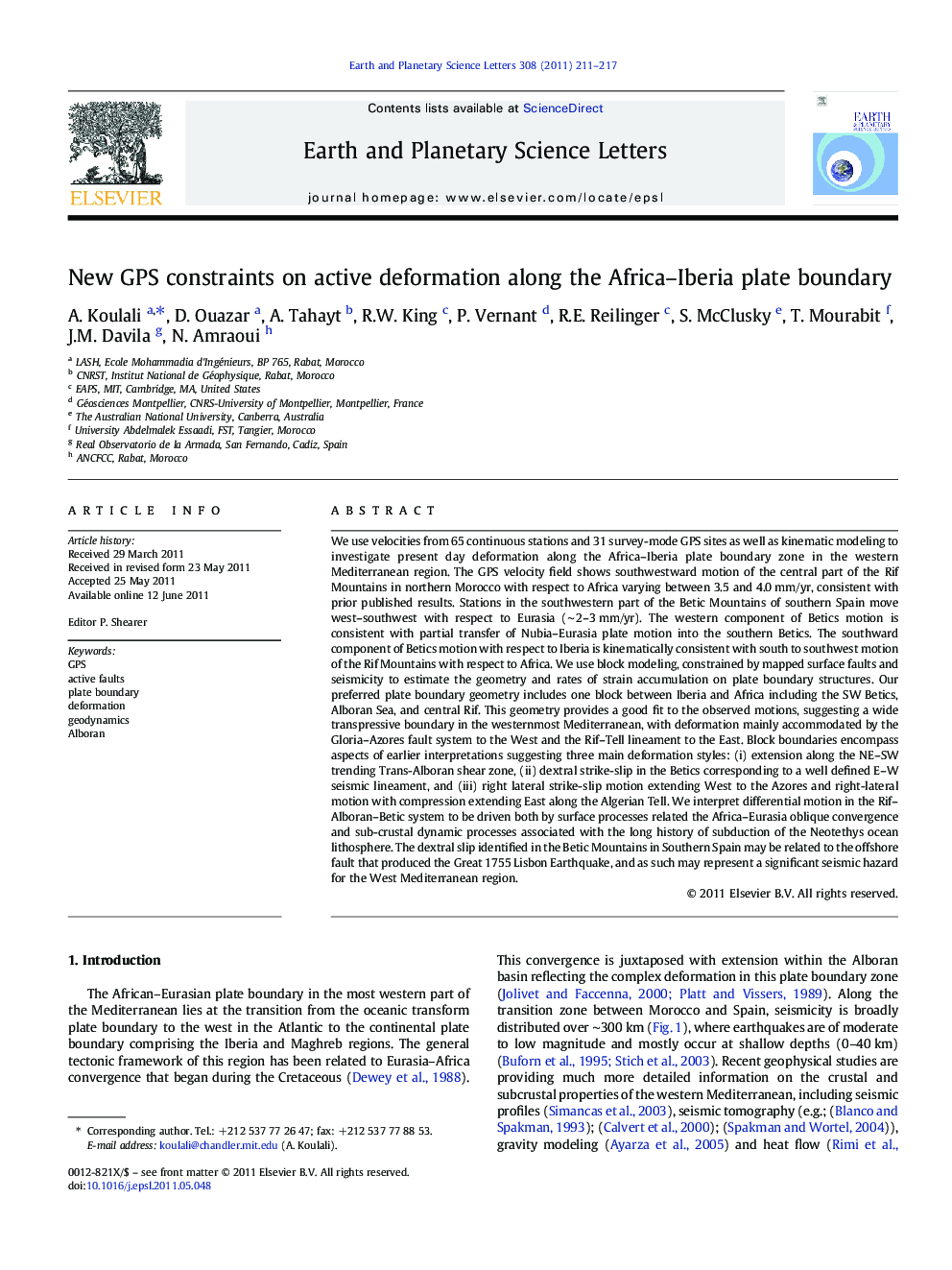| Article ID | Journal | Published Year | Pages | File Type |
|---|---|---|---|---|
| 4678049 | Earth and Planetary Science Letters | 2011 | 7 Pages |
We use velocities from 65 continuous stations and 31 survey-mode GPS sites as well as kinematic modeling to investigate present day deformation along the Africa–Iberia plate boundary zone in the western Mediterranean region. The GPS velocity field shows southwestward motion of the central part of the Rif Mountains in northern Morocco with respect to Africa varying between 3.5 and 4.0 mm/yr, consistent with prior published results. Stations in the southwestern part of the Betic Mountains of southern Spain move west–southwest with respect to Eurasia (∼ 2–3 mm/yr). The western component of Betics motion is consistent with partial transfer of Nubia–Eurasia plate motion into the southern Betics. The southward component of Betics motion with respect to Iberia is kinematically consistent with south to southwest motion of the Rif Mountains with respect to Africa. We use block modeling, constrained by mapped surface faults and seismicity to estimate the geometry and rates of strain accumulation on plate boundary structures. Our preferred plate boundary geometry includes one block between Iberia and Africa including the SW Betics, Alboran Sea, and central Rif. This geometry provides a good fit to the observed motions, suggesting a wide transpressive boundary in the westernmost Mediterranean, with deformation mainly accommodated by the Gloria–Azores fault system to the West and the Rif–Tell lineament to the East. Block boundaries encompass aspects of earlier interpretations suggesting three main deformation styles: (i) extension along the NE–SW trending Trans-Alboran shear zone, (ii) dextral strike-slip in the Betics corresponding to a well defined E–W seismic lineament, and (iii) right lateral strike-slip motion extending West to the Azores and right-lateral motion with compression extending East along the Algerian Tell. We interpret differential motion in the Rif–Alboran–Betic system to be driven both by surface processes related the Africa–Eurasia oblique convergence and sub-crustal dynamic processes associated with the long history of subduction of the Neotethys ocean lithosphere. The dextral slip identified in the Betic Mountains in Southern Spain may be related to the offshore fault that produced the Great 1755 Lisbon Earthquake, and as such may represent a significant seismic hazard for the West Mediterranean region.
Research highlights► We investigate present day deformation along the Africa-Iberia plate boundary. ► GPS velocities show southwestward motion of the central part of the Rif Mountains. ► We show a west–southwest motion of the southwestern part of the Betic Mountains. ► We propose a plate boundary geometry including one block between Iberia and Africa. ► We discuss the implications of the great 1755 earthquake.
